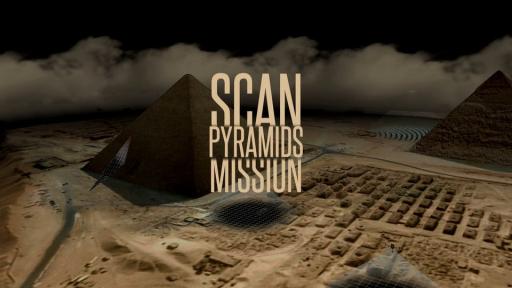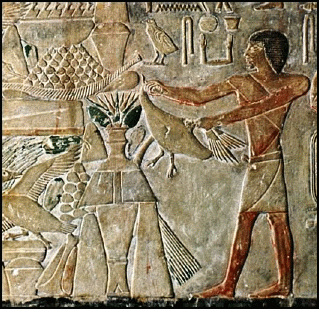At the most Northern end of Africa lies the country of mystical pyramids and pharaohs. It has been thousands of years since the pharaohs have ruled over
The mysteries of the pyramids and their mummies still attracts people from all over the world and thousands of tourists make their way there each year to see the Great Pyramids, Sphinx and the Nile. Many a scholar, scientist or archaeologist has
The Ministry of Antiquities and the ScanPyramids Project is about to make this a possibility. They are now probing the pyramids with the latest technologies and we will finally know what lies beyond the walls of these great stone henges.
The ScanPyramid Project was launched on the 25th October 2015 by The Egyptian Ministry of Antiquities in collaboration with the Faculty of Engineering of Cairo and the French HIP Institute, with three universities working together on ScanPyramid, namel
Hany Helal is the head of the mission for the Faculty of Engineering of Cairo, “Many theories have been proposed, either explaining their construction or their structural anomalies, but we are physicists and engineers, not archaeologists. Our goal is to use techniques to get concrete results. Then the Egyptologists will interpret them.” The motto ScanPyramid is using in their advertisement campaign
How true this is. In this modern age we now live in where technology and computer science is growing at the speed of light and has given the human race access to many forbidden territories, mysteries are not so hard to solve anymore.
The first person to use the word computer was an English writer called Richard Braithwait (1588-1673). In 1613 he wrote a book The Yong Mans Gleanings a
Braithwait tells us here of a new mathematician called “computer” who is predicting that our days will become shorter. The news of our days on earth getting shorter isn’t good news, not when there are still so many riddles in life to solve.
But the computer did indeed become a real mathematician, not only a man that works it out for you, but devices that can fly planes, sent rocket-ships to the moon and will now scan a pyramid.
In 1971 Nobel-prize winner for physics Louis Alvarez tried to see if there was any hidden chambers inside of the Chefren Pyramid at Giza by using radiographic muons, but unfortunately there was no successful outcome.
Now almost 24 years later, the researchers of the ScanPyramid Project is trying again and will use several different technologies to enter the great pyramids without having to cut into the massive blocks or excavate; leaving them undamaged for future generations to enjoy and wonder in.
They are using radiographic muons, infrared thermography, and photogrammetry with scanner and 3D reconstruction to scan the pyramids in an attempt to discover if there are tunnels or chambers lurking behind the walls of the world’s biggest man built triangles.
Radiographic muons come from cosmic particles that are broken down into tiny muons after it passes through the earth’s atmosphere. Muons fall to the ground at a constant rate of about 10,000 per m2 per minute, nearly the speed of light. Once it enters earth’s orbit it can glide through anything on our planet, even our bodies are penetrated by them. Radiographic muons are being u
In parts where there are denser areas more muons will be absorb and this way you would be able to tell if there are cavities hidden inside the pyramid or not.
Photogrammetry will be used to take aerial photos that captures everything in a 3D radius; allowing the scientists to see the whole of the pyramid, from its base to the top and all around. Infrared thermography uses cameras to detect radiation and will scan the mountains of the ancient Egyptians during the evenings to reveal if there is anything inside them.
A thermal imaging camera is used to capture images of objects of warm blooded humans or animals or objects with higher temperatures that stand out against cooler backgrounds, like those of the mummies hidden inside the Sarc
One thing ScanPyramid will be most definitely be scanning for is the hidden secret pathways and obstacles that have been detected in the past; but with less success. It is believed that these secret diversions were built into the pyramids to protect the pharaoh mummies against tomb raiders.
The ScanPyramids mission will begin now, early November and will focus on scanning four pyramids from the Fourth Dynasty (2575-2465 BC). The pyramids that will be scanned are: the South pyramid Bent and the North pyramid Red at Dahsur (the Snefru pyramids built 2575-2551 BC, it took approximately 24 years to build these two pyramids), and Khufu and Khafre pyramids at Giza Plateau, built by the son and grand-son of Snefru.
On the 5th and 6th November scanning of the walls of Tutankhamun’s Tomb with Infrared Thermography began on areas that may have openings. Tutankhamun’s Tombs was first discovered on the 4th November 1922.
The mission to scan the pyramids will go on until the end of 2016. Mehdi Tayoubi the President and co-founder of ScanPyramids said, “The key is to move forward by implementing new approaches. Many previous missions have attempted to unravel the mysteries of the pyramids and even if they were unsuccessful, they were helping advance knowledge. For example that was the case 30 years ago, when EDF foundation detected a density anomaly in the form of a spiral in Khufu. Our goal is to make our contribution and to prepare, in humility, the path for future scientific research missions.”
Let’s hope they find us some more interesting artefacts and facts from the past and that this is not just another “ScamPyramid” thing.











